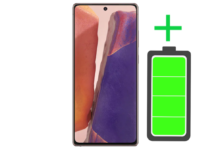Wondering why your laptop’s battery is discharging at the speed of light after you’ve upgraded to Windows 10? Here are a few steps to help you tinker with your laptop’s battery life. They will help you to improve battery life on Windows 10.
One of the easiest ways to improve battery life on Windows 10 is to enable the Battery Saver feature. This setting limits background activity and push notifications, and also lets you know how much power certain apps are draining. To enable this setting, click the small battery icon on the taskbar and then click the Battery Saver button. You can set this setting to start automatically at a certain battery level, access additional settings, and view battery statistics by right-clicking the button and selecting “Go to settings.”
If you want more control over improving battery life on Windows 10, managing the battery can help. You can open the Control Panel and navigate to Hardware and Sound > Power Options. From here, you can set what the power buttons do. Set what happens when closing the lid, how long of inactivity before the computer goes to sleep, and tweak even more advanced settings like how much CPU Windows is allowed to use. It’s recommended that you set your computer to go to sleep as soon as you close your laptop, so that as little power as possible is used.
Guide to Improve Battery Life on Windows 10:
Be sure to turn off features like Wi-Fi, Bluetooth, and location services when they are not in use, as these can drain the battery. People often overlook this, but setting aeroplane mode when you don’t need to be connected or when you’re on the road can save a significant amount of battery power.
Only use the apps you need, and limit the number of tabs you have open while browsing the web. The fewer apps open, the better. Additionally, consider limiting background processes by deactivating those you don’t need in the Task Manager, which can be accessed quickly by right-clicking on the taskbar and selecting Task Manager.
If you need to extend the battery life, consider adjusting the personalisation settings and setting the background to a solid colour (black works best). Another option is to turn off “Show color on Start, Taskbar, and action center” and “Make Start, Taskbar, and action center transparent.” Believe it or not, having fewer colours on the screen does save battery life.
Offers numerous10 settings to help save battery life. Taking as many of these factors into consideration as possible, you can significantly increase the battery life of your device and accomplish as much work as possible with the limited battery life. If you have additional tips for extending battery life in Windows 10, please share them in the comments below for everyone to see.

















